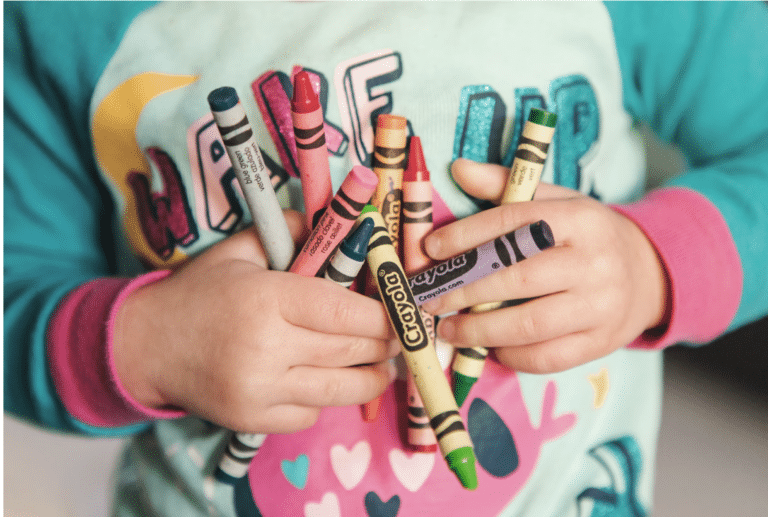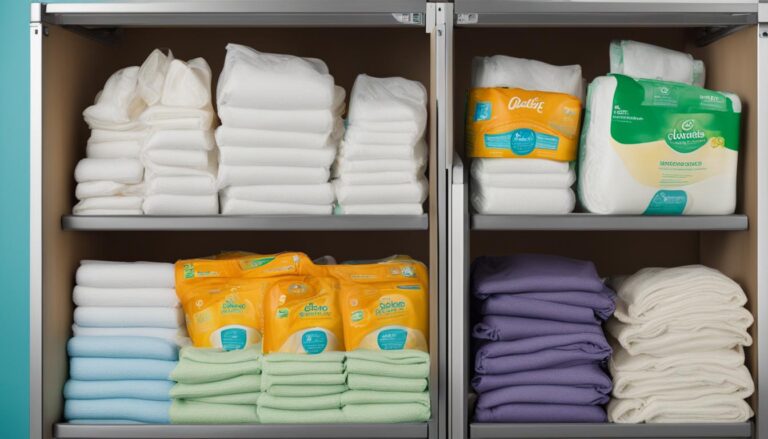Swaddling for Infant Gas Relief: Benefits and Techniques
As a new parent, you may have heard about the practice of swaddling your baby. Swaddling involves wrapping your baby snugly in a blanket, mimicking the feeling of being in the womb. Not only can swaddling help your baby feel secure and calm, but it may also have some surprising benefits when it comes to gas relief.
Does Swaddling Help With Gas?
Many parents have found that swaddling can help ease their baby’s discomfort from gas. But how does it work? And what are the other benefits of swaddling for infants? In this article, we’ll explore the connection between swaddling and gas relief, as well as the proper techniques for swaddling your baby. We’ll also offer tips for choosing the right swaddling blanket and discuss when it may be time to stop swaddling.
Additionally, we’ll address potential risks and precautions of swaddling and provide other methods for relieving infant gas. So, let’s dive in and learn more about whether swaddling can help with gas relief.
What Is Swaddling And How Does It Work?

Swaddling is a technique used to wrap newborns snugly in a blanket or cloth to mimic the feeling of the womb. This can help them feel secure and prevent movements that might startle them awake. Swaddling can be particularly helpful for young babies who have not yet developed good motor control or when transitioning from sleeping close to their caregiver to sleeping independently.
When swaddling, it is important to follow proper techniques, as improper swaddling can pose risks for a baby’s hip development. The blanket should be snug but not too tight around their hips, and the legs should be able to flex and move freely within the blanket. Parents should also ensure that their baby’s face is uncovered and they are placed on their back to sleep.
Related: NANIT SWADDLE VS BAND
Swaddling has been shown to reduce crying time in infants with colic and may also help regulate their body temperature, leading to better sleep cycles. Additionally, some research suggests that swaddling can promote self-soothing skills by reducing anxiety in babies. It is important for parents to consult with their pediatrician before using this technique and monitor their baby closely while swaddled.
The Connection Between Swaddling And Gas Relief
Swaddling is not only a comforting way to hold a baby but it can also aid in relieving gas. Swaddling helps create pressure around the baby’s tummy, which can release trapped gas and provide relief. When the baby is wrapped up tight, it simulates the coziness of the womb, mimicking their environment while in utero. This familiarity can help relax them and alleviate gas pain.
Studies have suggested that swaddling premature babies has led to improved development of nerves and muscles. It helps with better organization of motor movement and integrating stimuli from different parts of their body. Swaddled babies experienced less bodily stress that affected their overall growth compared to those who were not swaddled.
Additionally, swaddling provides continuous touch and support infants need that makes them feel secure, comforting them when they’re experiencing discomfort or crying uncontrollably because of gas pains. Babies sleep longer while being swaddled as it keeps their arms down preventing sudden jerks waking them up at night due to feeling startles on account of moro reflexes.
While swaddling may not work for all babies with gas problems, many parents find success in using this technique as part of an overall routine for better soothing their infant’s digestive issues. Before practicing swaddling techniques though, parents should be sure to consult with doctors or other healthcare professionals about how best they could use this method depending on the infant’s age or if there are any complications involved.
Benefits Of Swaddling For Infants
Swaddling is a practice that involves wrapping infants snugly in blankets or cloth. Research shows that swaddling has several benefits for infants, including longer and more peaceful sleep time. Swaddled infants feel secure, relaxed, and less stressed.
Related: HOW LONG DO BABIES WEAR NEWBORN CLOTHES
In addition to promoting better sleep and relaxation, swaddling can also help soothe pain in infants. Premature babies who are swaddled show improved neuromuscular development, better self-regulatory ability, and less physiologic distress. For newborns suffering from colic or addiction at birth, swaddling can mimic the coziness of the womb environment to calm their crying episodes.
However, improper swaddling technique may pose risks such as overheating and sudden infant death syndrome (SIDS). Parents need to be cautious of signs such as sweating, damp hair or rash when wrapping their baby before monitoring for sleep quality is not neglected. It is important to follow safety guidelines when practicing swaddling on infants.
Overall, if done properly with safety measures being observed at all times ,swaddling can benefit many newborns by promoting better sleep quality especially those with neurologic issues or colic symptoms which leads them towards a more peaceful early life experiences.
How To Swaddle Your Baby Properly
Swaddling is an effective way to keep your baby warm and calm, especially if they have colic. However, improper swaddling can pose risks for your little one. Here are some guidelines to follow when swaddling your infant safely.
Firstly, make sure the blanket is not too tight by placing two to three fingers between the baby’s chest and the swaddle. The swaddle should leave only your baby’s head and neck exposed, ensuring there is no risk of suffocation. Be careful not to rigidly extend their legs or make the swaddle too tight; this can cause hip dysplasia or other injuries.
Swaddling also helps relieve gas pains in babies. Another helpful tip is placing a baby on their stomach while awake; this helps relieve gas pains and is great for tummy time exercise. Burping allows your baby to remove some of the trapped gas from swallowing air during breastfeeding or bottle-feeding, ultimately relieving pain.
Lastly, always talk with your pediatrician before giving a baby gripe water as it might not be suitable for them depending on age and medical history. By following these simple guidelines, proper swaddling can help provide comfort and relief for you and your baby.
Tips For Choosing The Right Swaddling Blanket
Swaddling a baby can help soothe them and make them feel secure. It has been known to reduce fussiness, improve sleep quality, and decrease the risk of Sudden Infant Death Syndrome (SIDS). When choosing a swaddling blanket, there are a few things to consider.
Firstly, it’s important to choose a fabric that allows for breathability. Materials such as cotton or muslin are great options because they’re lightweight and breathable. Additionally, softer fabrics made of muslin or cotton gauze are ideal for newborns as they’re gentle on their delicate skin.
When it comes to swaddling your baby, you want the blanket to be snug but not too tight. It’s vital never to position your infant face-down while swaddled since this could obstruct breathing. It’s also important always to lay down the infant on their back when going off to bed.
Another thing you might want is a two-in-one swaddle with Velcro or zippers that can make swaddling an easier process.
Finally, keep in mind the size of the blanket; usually 44 inches square is sufficient. Avoid blankets that are too large since these may pose suffocation hazards.
Overall, some popular options include Aden + Anais Classic Swaddle Baby Blankets due to its cozy texture and safe fit when wrapped around infants appropriately. Swaddling can be an efficient way of calming babies who struggle with gas related issues or restlessness but should be utilized safely by following approved guidelines based on literature reviewed by experts in Pediatric Care like AAP( American Academy of Pediatrics).
When To Stop Swaddling Your Baby
Swaddling is a common practice many parents use to soothe their infants and promote better sleep. However, experts recommend stopping swaddling once your baby starts trying to roll over, typically between 2-4 months of age. This is because swaddling can increase the risk of SIDS or suffocation if your baby can roll onto their stomach while swaddled.
Gas is normal for babies and usually goes away on its own, but swaddling can help relieve it. However, it’s important to check for signs of overheating while swaddling and watch for signs of your baby trying to sleep on their stomach. If you’re worried about gas, try burping your baby more often or changing their feeding position.
When it’s time to stop swaddling, experts recommend using sleep sacks or wearable blankets instead. These allow your baby to move freely while still feeling secure and comforted. Some doctors even recommend stopping swaddling at 2 months old to prevent rolling onto the stomach.
In conclusion, although swaddling can be helpful in soothing and calming babies with gas, it’s important to know when to stop this practice for safety reasons. Experts advise parents that if a child has reached around two- four months old or are starting push from arm locks after being wrapped up that they should stop wrapping them tightly as It could lead suffocation due never rule out developmental progress such as rolling over during those period thus making them expose making them insecure by restricting movements up front which ultimately worsen the situation
Potential Risks And Precautions Of Swaddling

Swaddling has been a popular practice among parents for centuries, but it’s important to understand the potential risks and take proper precautions before doing so. One risk is that swaddling can increase the chance of overheating, which can be dangerous for infants. To avoid this, make sure your baby is not overdressed and that the room temperature is comfortable.
Another risk is that swaddling too tightly can lead to respiratory issues, so it’s important to ensure that the swaddle is not restricting breathing. Additionally, swaddling should be discontinued when infants show signs of rolling over since it increases the risk of suffocation. Infants must continue to be placed on their backs when swaddled.
Despite these risks, swaddling can be a useful strategy to encourage infant safe sleep practices. It helps prevent spontaneous movements during sleep which may wake up or disturb infants with colic or gas pains. Swaddling presents minimal risk if precautions such as avoiding overheating and proper swaddling techniques are taken.
It’s also essential to note that every baby is different; some may benefit from swaddling while others do not find it comfortable at all. Always pay attention to your baby’s physical cues and adjust accordingly if they show any discomfort or distress while being swaddled. With proper care and attention, you can safely practice infant swaddling while preventing gas trouble in your little one.
Other Methods For Relieving Infant Gas
There are several methods for relieving infant gas that do not involve medication. One effective method is to position your baby over your shoulder or on an armrest to help relieve gas. This position allows gravity to assist in moving the trapped gas out of the baby’s system.
Another method is to massage your baby’s belly in a clockwise motion, which can help move and expel gas. You can also try a combination of massaging and bicycling your baby’s legs, which can ease discomfort caused by trapped wind.
Swaddling your baby can help prevent gas, but it needs to be done safely. When swaddling, make sure that the material around the stomach area is loose enough for air circulation and does not put pressure on the abdomen.
Additionally, you can pump your baby’s legs and move them around gently, as this movement can also relieve gas discomfort. Hot compresses on the baby’s tummy can also be effective in relieving colic, gas, upset stomachs, and constipation.
Finally, some parents use Little Remedies Gas Relief Drops to help their babies feel more comfortable. These drops contain simethicone as an active ingredient which purportedly helps break up gas bubbles in infants’ digestive systems. Remember to speak with a pediatrician before giving any medication or changing feeding routines as each infant’s digestive system reacts differently.
In summary, there are many safe methods for relieving infant gas that don’t involve medication intake or changing foods immediately. From positioning techniques like holding them over an armrest while patting their back or using tools such as hot compresses or anti-gas relief drops relying solely on medicines isn’t necessary unless prescribed by a medical professional; these simple approaches have been used by many families effectively to alleviate symptoms of uncomfortable gassiness for babies within just minutes at home!






